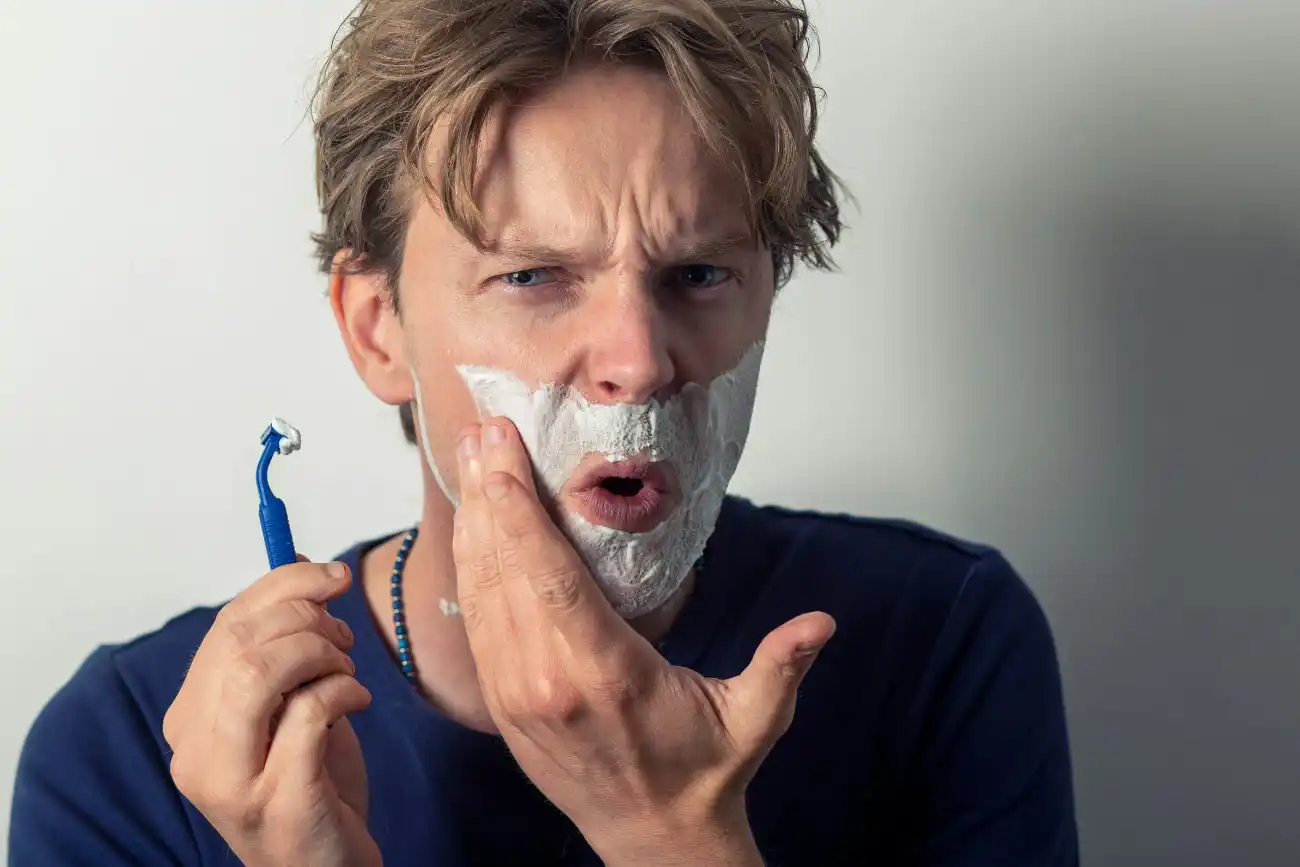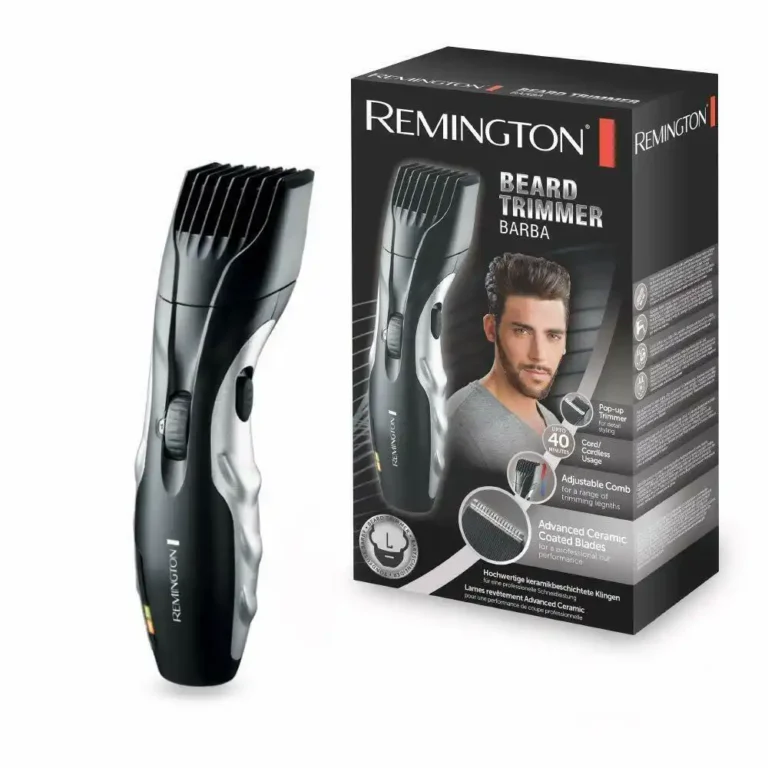This post may contains affiliate links.
How to shave for beginners? Shaving is an essential skill that you may be looking to master, especially if it’s your first time. It is much more than a simple rite of passage; it’s a grooming practice that, when done correctly, results in smooth skin and boosts your confidence.
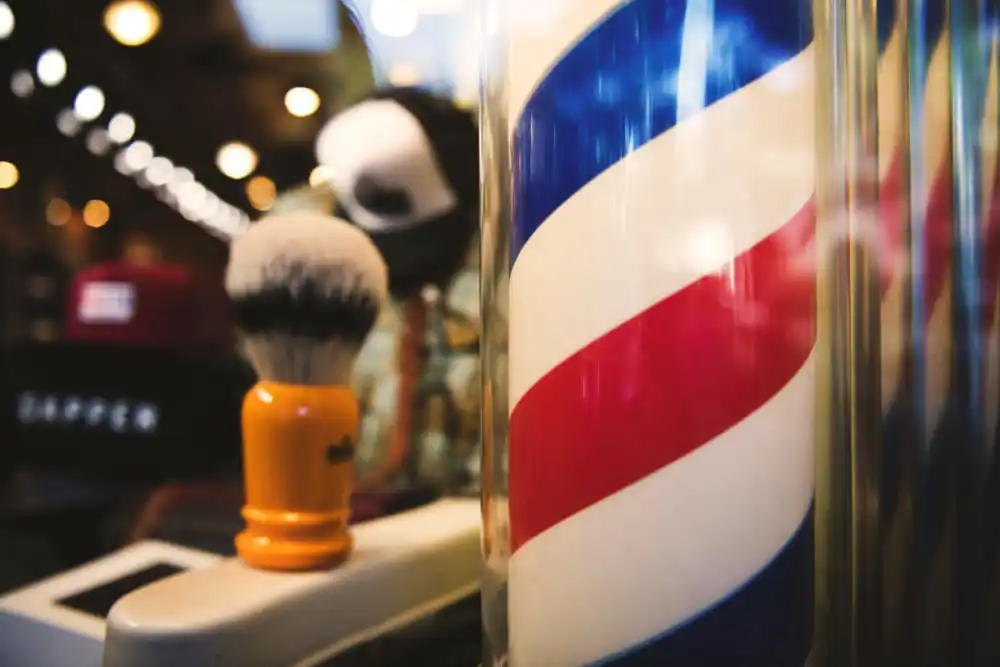
How To Shave For Beginners
The key to a successful shaving experience lies in understanding the correct technique. Knowing how to prep your skin, choosing the right tools, and learning the actual steps of shaving will make the process efficient and enjoyable.
Proper preparation of your skin can dramatically improve your shaving experience. Start by cleansing your skin to remove excess oil and dead skin cells, which helps prevent razor bumps and ingrown hairs. Applying a warm towel or shaving after a shower can soften your hair and open up your pores, making the shave smoother and less irritating.
Choose a quality razor and shaving cream or gel that suits your skin type to minimize discomfort and protect your skin during the shave.
When it comes to technique, using short, gentle strokes while shaving will help you avoid nicks and cuts. Be sure to shave in the direction that your hair grows to reduce irritation. Don’t press too hard; a sharp razor blade should do most of the work.
After shaving, rinse your skin with cool water, pat dry with a clean towel, and apply a moisturizer or aftershave to soothe your skin. Remember, shaving is a skill that improves with practice, so take your time to learn what works best for your skin.
Preparing Your Skin
Proper skin preparation is a foundational step for a smooth shaving experience, helping to prevent irritation. Understanding your skin and hair type leads to better choices in the tools and methods you use for shaving.
Understanding Skin and Hair Types
Identifying your skin and hair type is crucial. For instance, thick hairy skin might need a more robust approach compared to sensitive skin, which requires gentler products. Dry skin benefits from extra moisture, whereas oily skin may need a less emollient approach. Always consider personal preference when selecting products.
- Skin Types: Normal, Oily, Dry, Combination, Sensitive
- Hair Types: Thin, Thick, Curly, Straight
Initial Steps Before Shaving
Taking preliminary actions can significantly improve your shaving routine. Start with a warm shower, as the steam opens pores and softens your hair, making it easier to cut. Clean your skin to remove dirt and oil that could cause razor bumps.
- Washing: Use a gentle cleanser suitable for your skin type.
- Exfoliation: Employ a loofah or exfoliating product to remove dead skin cells.
After exfoliating, rinse thoroughly with water. Gently pat your skin dry; do not rub, as this might irritate. Moisturize to protect against dry skin and to create a barrier between the razor and your skin, reducing friction. Remember, the goal is to achieve clean, smooth skin that’s primed for shaving.
Selecting the Right Shaving Tool
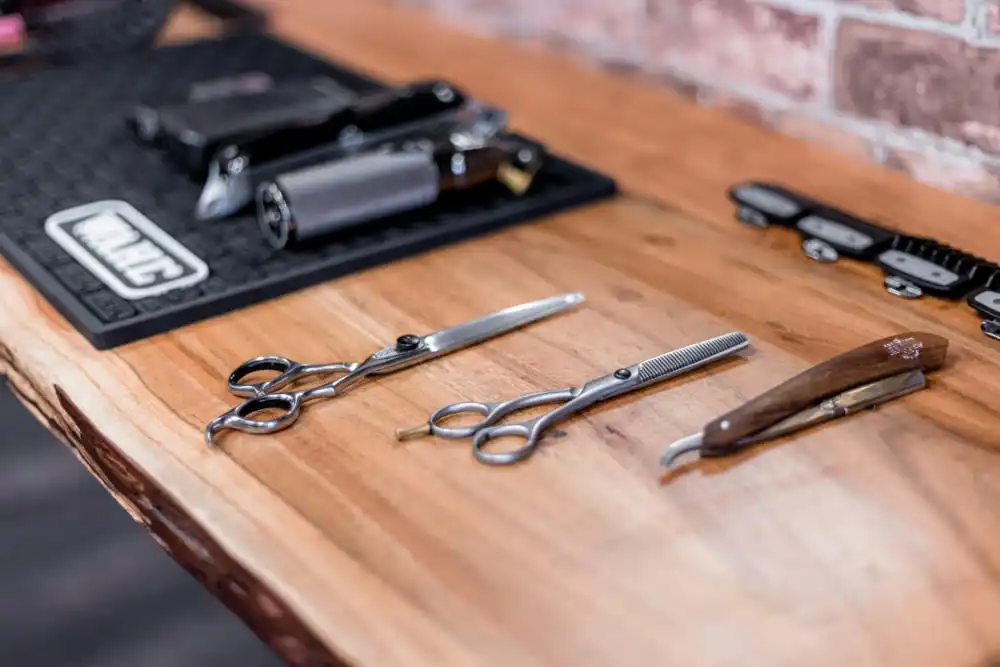
Choosing the right shaving tools is essential for a smooth and comfortable shave. The type of razor and shaving aids you select can greatly affect the quality of your shave and the condition of your skin afterwards.
Types of Razors
- Electric Razor: These are convenient for quick shaves and are generally less likely to cause cuts. Quality electric razors like the Philips 5000 series can offer various settings to handle different hair lengths and sensitivities.
- Disposable Razor: Ideal for travel or infrequent use, disposable razors are cost-effective. However, for the sake of sharpness and sustainability, frequent shavers should consider other options.
- Reusable Razor: Reusable razors such as safety razors or cartridge razors are environmentally friendly and can be more economical in the long run since only the blades need frequent replacement.
- Cartridge Razors: Feature replaceable cartridges that may have multiple blades for a closer shave.
- Safety Razors: Known for their single blade and the close shave they provide. They require technique but can reduce skin irritation.
- Straight Razor: Offers the cleanest shave with a significant learning curve. It’s a single, sharp blade that folds into its handle. Proper care and technique are crucial for safety and effectiveness. Buy a beginner straight razor on Amazon.com
Shaving Aids
- Shaving Cream/Gel/Soap: A protective layer is important to soften the hair and reduce friction. Your choice depends on your skin type and preference:
- Shaving Cream: Rich and moisturizing, good for dry skin.
- Shaving Gel: Transparent and allows you to see the shaving area, suitable for precise shaving.
- Shaving Soap: Traditional and long-lasting, it requires a brush to create a lather.
- Brush:
- Brushes, particularly those with badger hair, lift facial hair for a closer shave and help create a rich lather when used with shaving soap.
- Hair Conditioner: In a pinch, it can be used as a shaving aid because its moisturizing properties soften hair and make it easier to cut.
Choosing a quality razor that suits your personal needs, along with the appropriate shaving aids, will enhance your shaving experience and result in better outcomes for your skin.
The Shaving Process
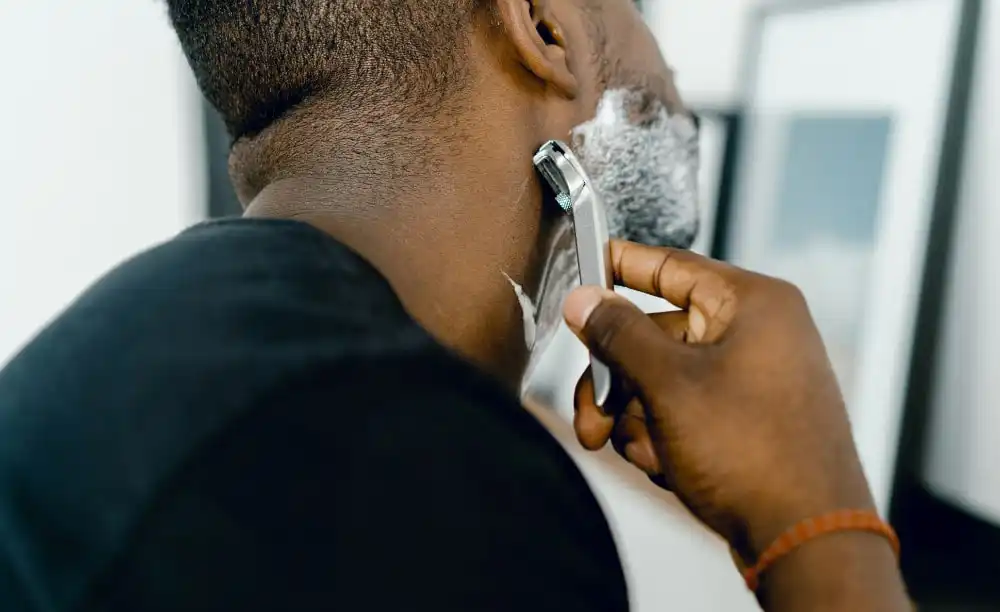
The shaving process involves a blend of proper technique to ensure smoothness and comfort, adhering to the direction of your hair growth and maintaining blade cleanliness through rinsing.
Technique and Direction
When you shave, your goal is to achieve a close shave with minimal irritation. To do this, start with a sharp razor and well-hydrated skin, usually after a warm shower. Apply a generous layer of shaving cream or soap to reduce friction and help the razor glide more effortlessly.
- Against the grain: Shaving against the direction of hair growth can lead to a closer shave but increases the risk of irritation and nicks.
- With the grain: For beginners, it’s generally best to shave with the hair growth direction, as it reduces the chances of skin irritation and razor bumps.
| Direction | Closeness | Risk of Irritation |
|---|---|---|
| With the grain | Less close | Lower |
| Against the grain | Close | Higher |
Employ light pressure with the razor to avoid nicks and cuts. Excessive pressure does not improve the quality of your shave and can lead to discomfort.
Rinsing and Repeating
After each pass with your razor, it’s essential to rinse the blade under running water to remove hair and residual shaving cream. This helps maintain the razor’s effectiveness and prevents tugging, which can cause discomfort.
- Rinse your razor frequently, ideally after every stroke, to keep the blades clean and prevent clogs.
- If some areas aren’t as smooth as you’d like, reapply shaving cream and carefully shave the area again, still maintaining light pressure.
- Ensure that your skin remains wet and well-hydrated during the entire process to aid in razor glide and reduce the chance of irritation.
Continuous hydration and clean, sharp blades contribute significantly to the overall quality of your shave.
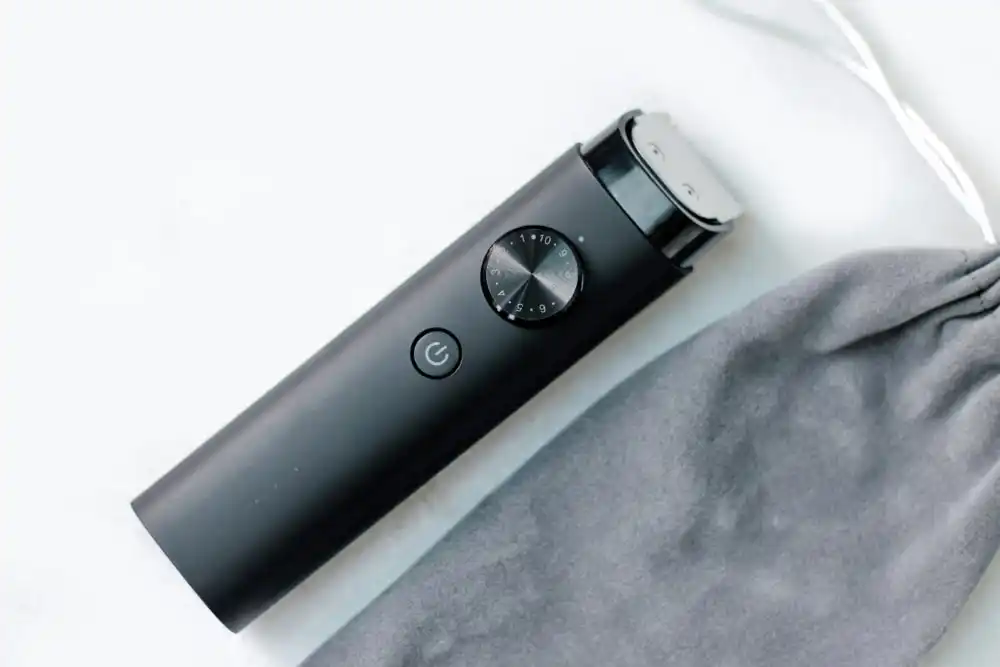
Post-Shave Care
Proper post-shave care is critical to prevent irritation and maintain the health of your skin after shaving. Applying appropriate products can soothe and protect the skin.
Avoiding Irritation
After shaving, your skin can become particularly sensitive, leading to razor burn, bumps, and ingrown hairs. To minimize these issues, follow these steps:
- Rinse your face with cool water to close the pores and reduce redness.
- Gently pat your skin dry with a clean towel rather than rubbing, to prevent further irritation.
- Use an aftershave that is free from alcohol to avoid drying out your skin. Products containing alcohol can strip away moisture, increasing the risk of itchy razor bumps and irritation.
Maintaining Skin Health
Keeping your skin healthy after a shave is important to avoid breakouts and moisture loss. Ensure to:
- Apply a moisturizer to hydrate your skin. This helps in restoring moisture loss and forms a barrier against environmental irritants.
- If you are prone to razor bumps or ingrown hairs, consider using a product designed to gently exfoliate and keep the hair follicles clear without causing abrasion which can further irritate your skin.
Troubleshooting Common Issues
Sometimes, despite your best efforts, you may encounter issues such as cuts and razor bumps or have trouble shaving difficult areas. Proper technique and care can help minimize these problems and enhance your shaving experience.
Dealing with Cuts and Razor Bumps
Cuts: If you cut yourself while shaving, it’s essential to immediately rinse the area with cold water to clean the wound and help reduce bleeding. Applying an antiseptic can prevent infection. To avoid cuts, ensure you use a sharp razor—dull blades can snag on the skin, increasing the risk of injury. Store your razor in a dry place to maintain blade sharpness.
Razor Bumps: Razor bumps, or ingrown hairs, often occur when hair curls back into the skin. To prevent them, apply a gentle scrub before shaving to exfoliate and lift hairs away from the skin. After shaving, use a soothing, alcohol-free moisturizer to reduce irritation. If you shave your bikini area, using a razor with a rounded point can help navigate the contours and reduce irritation.
Strategies for Difficult Areas
Neck and Chin: For a closer shave on the neck and chin, be sure to pull the skin taut and shave in the direction of hair growth. This reduces the chance of hair pulls and skin irritation.
Upper Lip, Ankles, Underarms, Bikini, Knee, Pubic Area: These areas are more prone to cuts and irritation due to their contours and difference in hair texture. Use short, light strokes and reapply shaving cream or gel if necessary to maintain lubrication. For the bikini and pubic area, ensuring the razor blade is sharp will result in a longer-lasting shave and lessen the chance of irritation.
Remember, proper preparation, including a well-honed razor and thorough skin hydration, is key to addressing these common issues and achieving a smooth, comfortable shave.
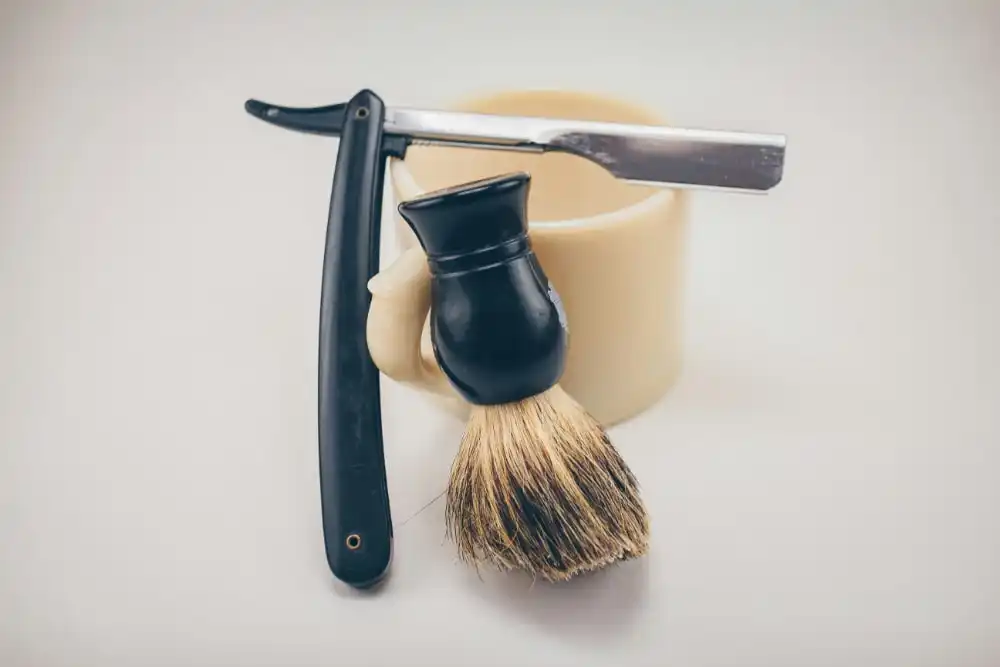
Frequently Asked Questions
When beginning to shave, having the right information can make the process smoother and reduce the risk of irritation. Here, we address some common questions to guide you through the shaving process confidently.
What is the proper way to prepare skin before shaving?
Before shaving, clean your skin with warm water and a mild cleanser to remove oils and dead skin cells. Apply a hydrating shaving cream or gel to protect the skin and improve razor glide.
Which direction should I shave to minimise skin irritation?
Shave in the direction of hair growth to minimise skin irritation. Going against the grain can cause razor bumps and ingrown hairs. Check out our article on how to shave effectively.
What are the essential shaving products needed for a beginner?
A beginner should use a sharp, clean razor, high-quality shaving cream or gel, and a soothing aftershave balm or lotion to moisturize the skin post-shave.
At what age is it appropriate to start shaving?
You can start shaving when you notice hair growth that you wish to remove. This varies by individual and can range from early adolescence into the later teen years.
How do I choose the right razor for my skin type?
For sensitive skin, consider razors with built-in moisturizing strips and fewer blades. For coarser hair, multi-blade razors may provide a closer shave. Always use a razor that feels comfortable and doesn’t irritate your skin.
What is the best technique to use when shaving for the first time?
Hold the razor at a comfortable angle and use light, gentle strokes. Avoid pressing too hard to prevent cuts, and rinse the blade after each stroke to remove hair and buildup. Take your time and handle contours with care.
